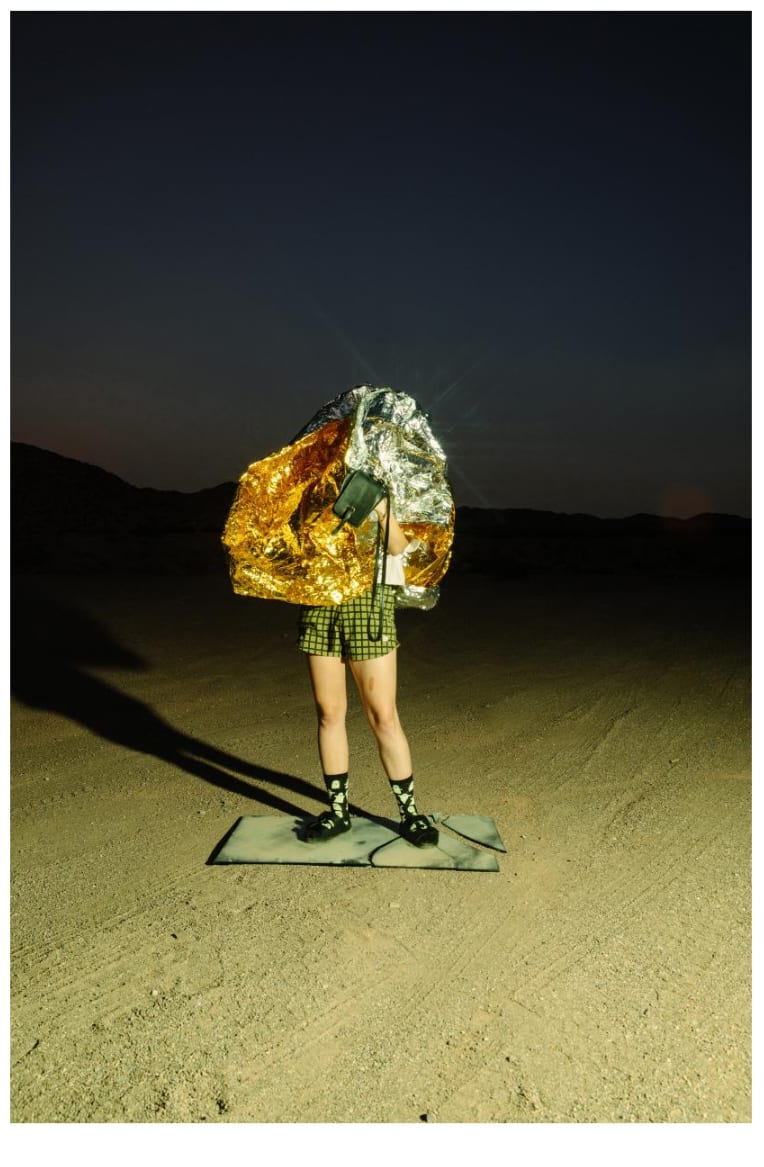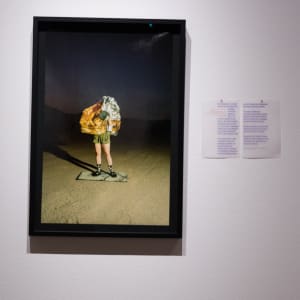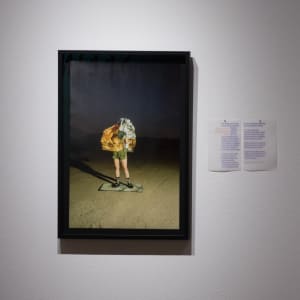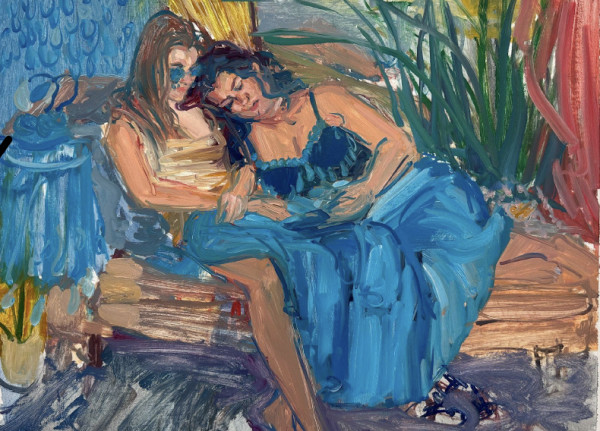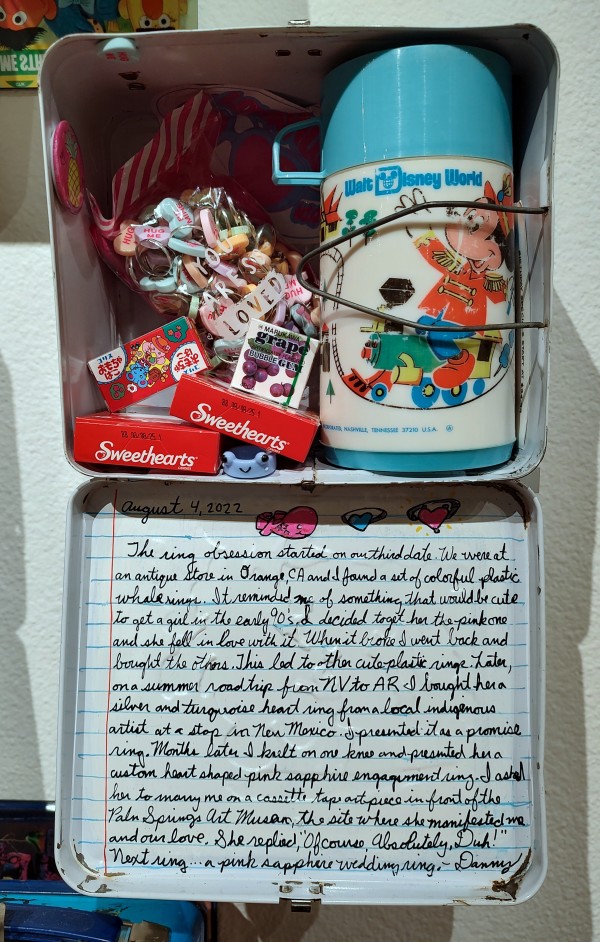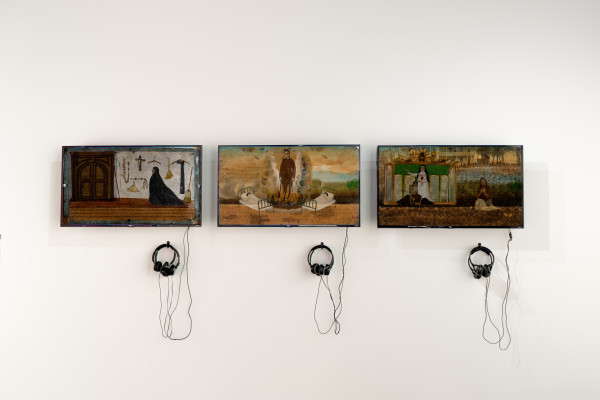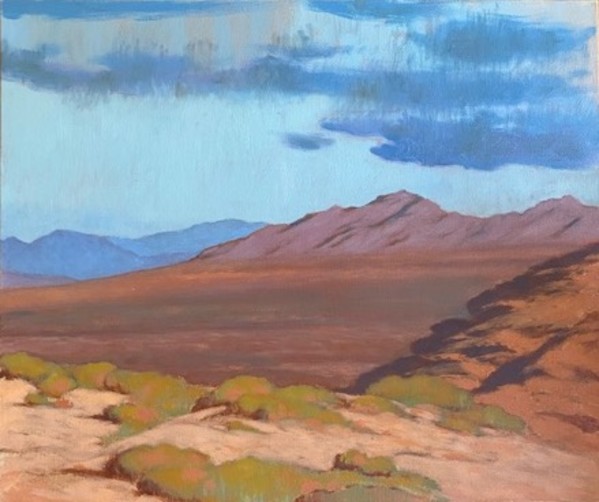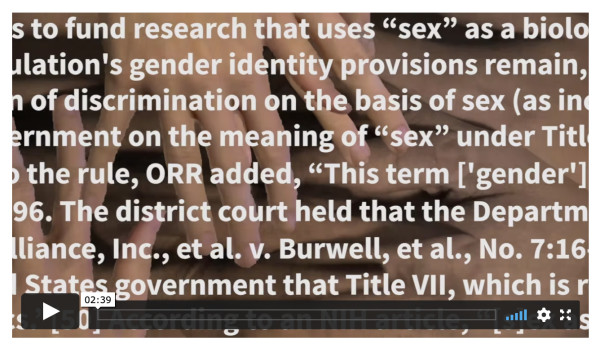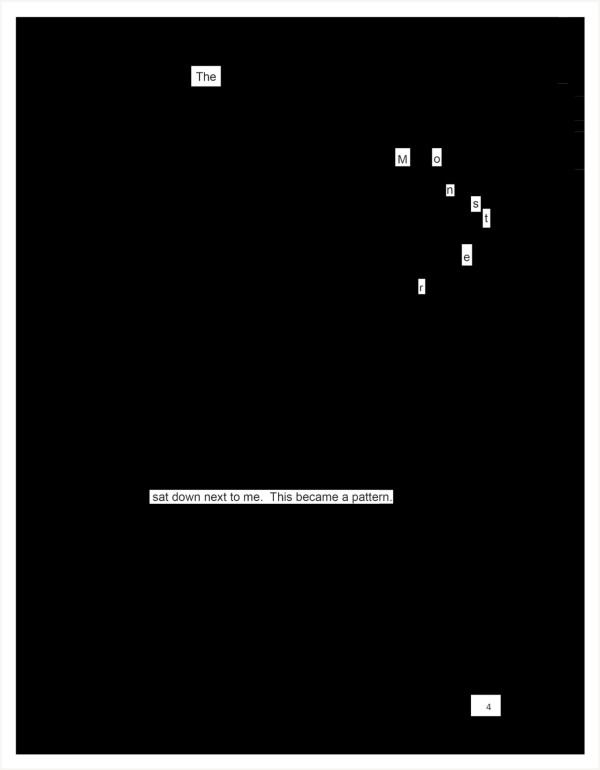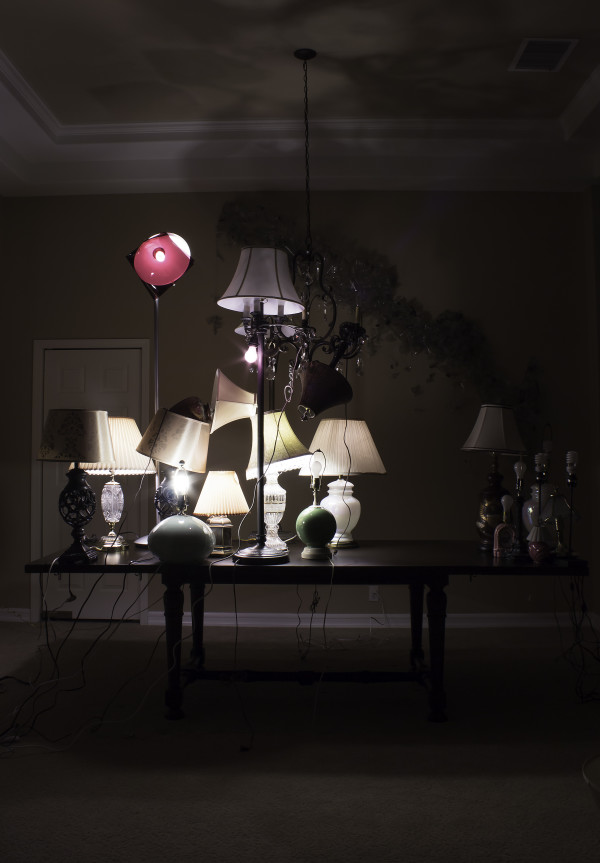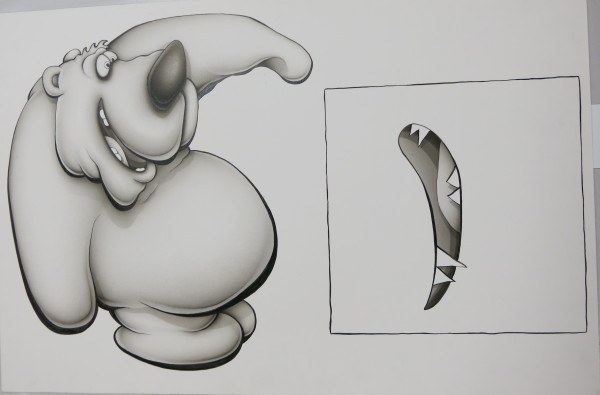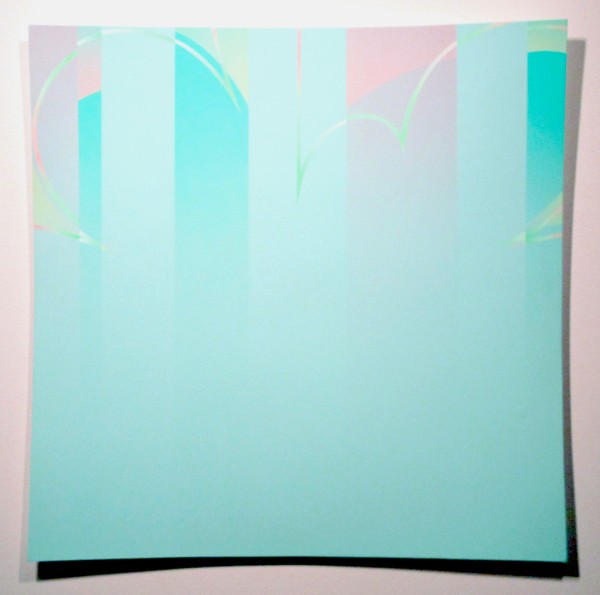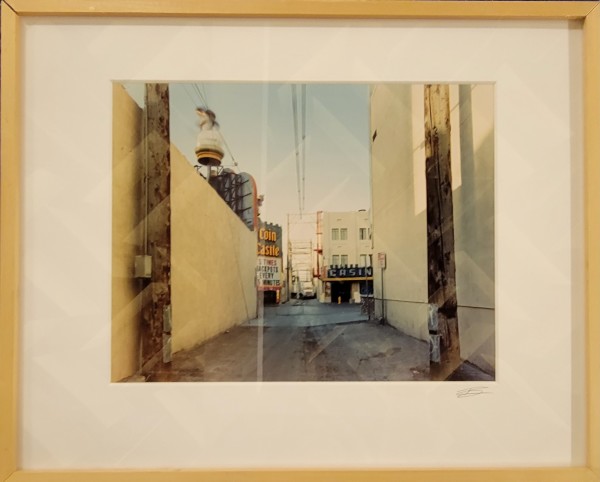
UNLV Marjorie Barrick Museum of Art
Las Vegas, Nevada
We believe everyone deserves access to art that challenges our understanding of the present and inspires us to create a future that makes space for us all.
MessageMikayla Whitmore
Seven Years of Bad Luck
In the Direction of Searchlight, Nevada, USA, 2019
A framed photograph of a human figure standing on a broken mirror in a dry, sandy landscape. The person’s head and torso are covered with a reflective metallic blanket colored gold and silver. They are wearing sandals, checkered shorts, and black socks decorated with tiny cartoon ghosts. The landscape is dark; the person is illuminated from the front with a bright light. In one hand they hold up a flat black object that faces towards the viewer.
Scouting locations for an assignment, Whitmore loaded up their car with props and set out from Las Vegas in search of solitude. Heading past dry Jean Lake towards the town of Searchlight, they pulled off into the desert. The sound of gunshots and a sun-baked sign told them they had accidentally strayed near a firing range. Pressed for time, they stayed to record their presence in the landscape while guns boomed urgently in the distance and the sun pitched towards the horizon.
The mylar emergency blanket covering their face is a sign that something is wrong, but the bag in their hand is too small to offer any help. The mirror under their feet is broken and covered in sand. If we imagine it as a portal, like the other mirrors in Between a Rock and a Cliff, then it is a sealed and damaged one, unable to create a reflection. The artist describes this conflicted figure—hidden yet not hidden, wanting to be seen but hesitant about offering up their full identity—as a representation of “the duality of being queer,” which can involve “hiding your true self when out in the world as a means to survival.” They point out that the gleaming surface of the mylar is similar to the deceptive shine of pyrite, or fool’s gold. (DKS)
The mylar blanket also references fool’s gold or pyrite, which is a mineral that mimics the look of gold, but is valueless instead of finding a fortune.
Hiding my identity is in part from wanting to be seen, but nervous about being seen for myself.
Speaking to the duality of being queer, but often hiding your true self when out in the world as a means to survival.”
Mikayla Whitmore, in an email about their solo Marjorie Barrick Museum of Art exhibition Between a Rock and a Cliff (2020)
- Created: 2019
- Inventory Number: 2020.05.001
